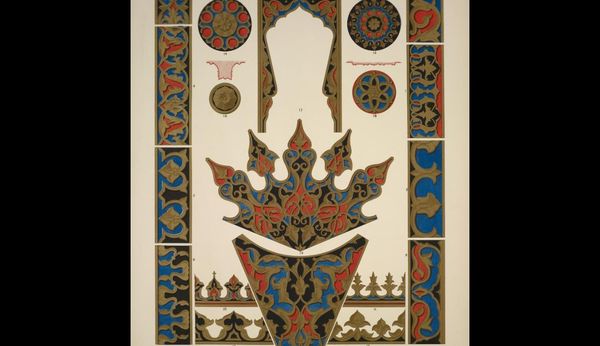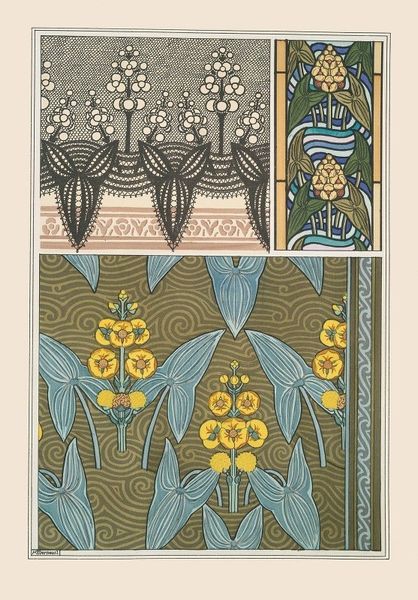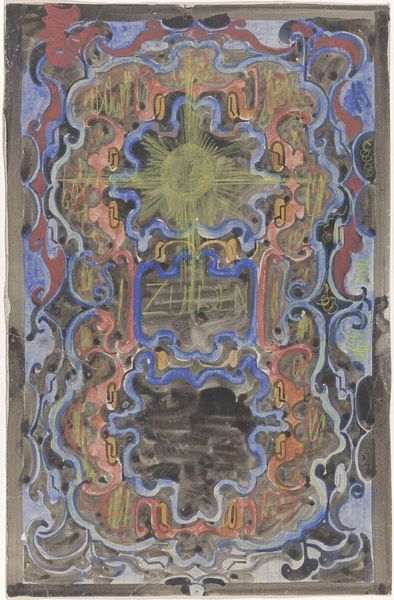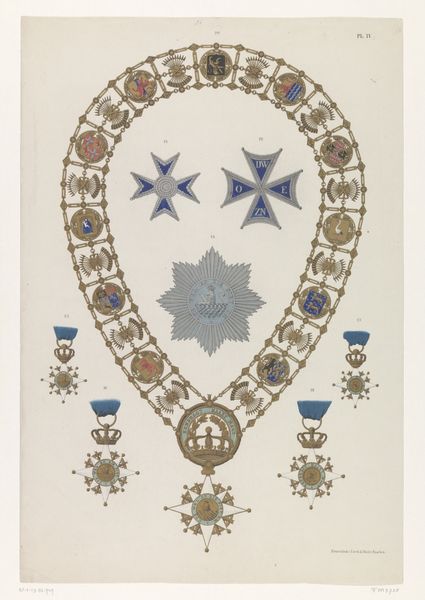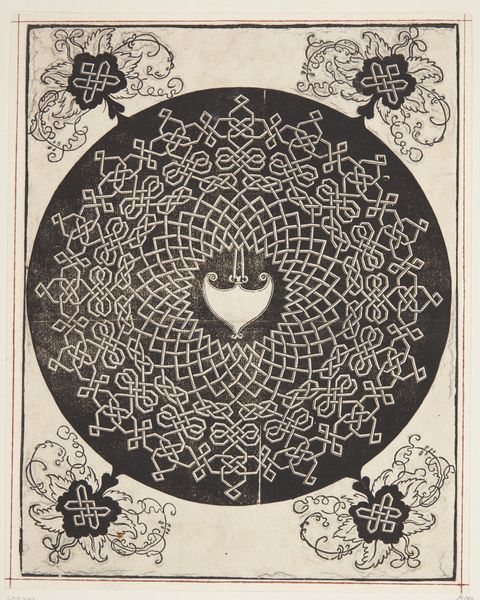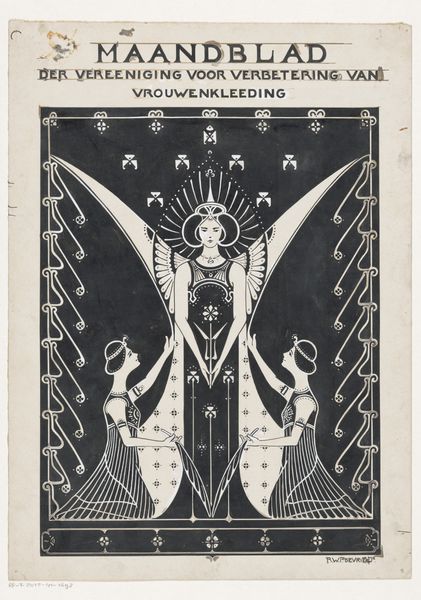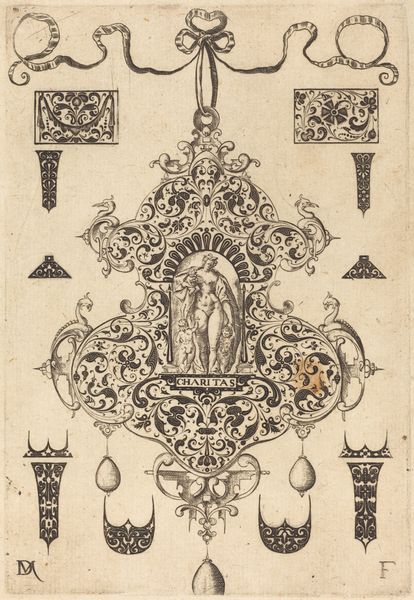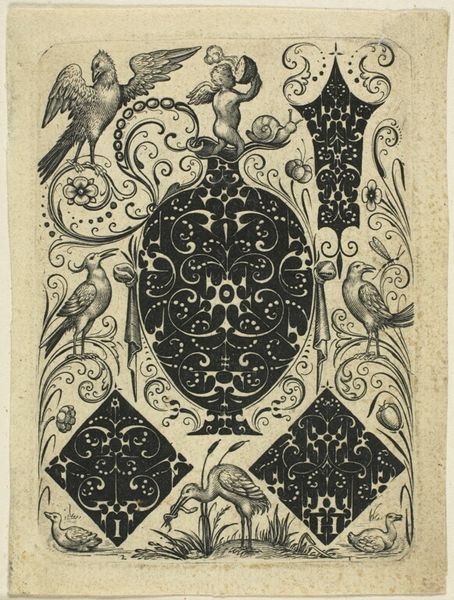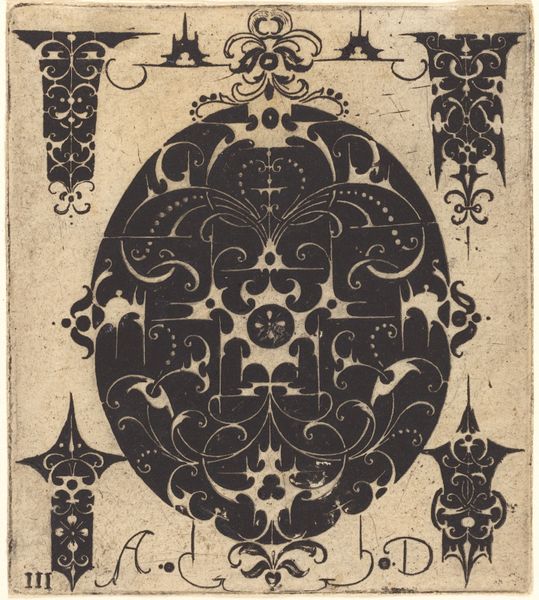
graphic-art
#
graphic-art
#
natural stone pattern
#
naturalistic pattern
#
geometric pattern
#
abstract pattern
#
repetitive shape and pattern
#
ethnic pattern
#
geometric
#
orientalism
#
repetition of pattern
#
pattern repetition
#
islamic-art
#
decorative-art
#
layered pattern
#
funky pattern
Copyright: Public Domain: Artvee
Curator: "Turkish No. 1," created in 1856 by Owen Jones. It’s a graphic print showcasing a range of decorative motifs rooted in Islamic art. The work epitomizes the broader Orientalist movement of the time. Editor: The intricacy is striking. There's a harmonious layering of geometric shapes and vibrant colours—blue, red, gold—creating this elaborate, almost hypnotic pattern. Curator: Jones was hugely interested in the cultural context behind ornamentation. His patterns were drawn from his travels in Egypt, Spain, and of course, Turkey. Jones saw decorative art as reflecting broader cultural values. These visual motifs weren’t just aesthetic, they encoded historical narratives of exchange and power. Editor: Absolutely, there’s definitely an argument to be made for appreciating them as visual signifiers first. Consider how Jones uses repetition. He meticulously arranges abstract forms, achieving both symmetry and a kind of visual rhythm. How might we unpack the underlying structural principles at play? Curator: Precisely. Jones, despite the visual splendor, had some blind spots shaped by his historical and colonial contexts. For instance, "appropriation" is an appropriate word to employ here. As a cultural outsider, what was his actual depth of understanding? Or how were these designs then co-opted, stripped of their original significance in British aesthetic theory? Editor: I concede. Perhaps my semiotic impulse overlooks crucial sociopolitical readings of decorative Orientalism as a symptom of the Empire. Still, though, I find myself in awe of the sheer technical expertise shown in this image and that can be divorced from this somewhat. Curator: A balanced point. These sorts of questions are central to unlocking deeper insight. Appreciating it within the frame of design and cultural legacy enables new understandings of Jones’s work. Editor: Indeed, thank you for elucidating both sides of a really rather lovely design!
Comments
No comments
Be the first to comment and join the conversation on the ultimate creative platform.
